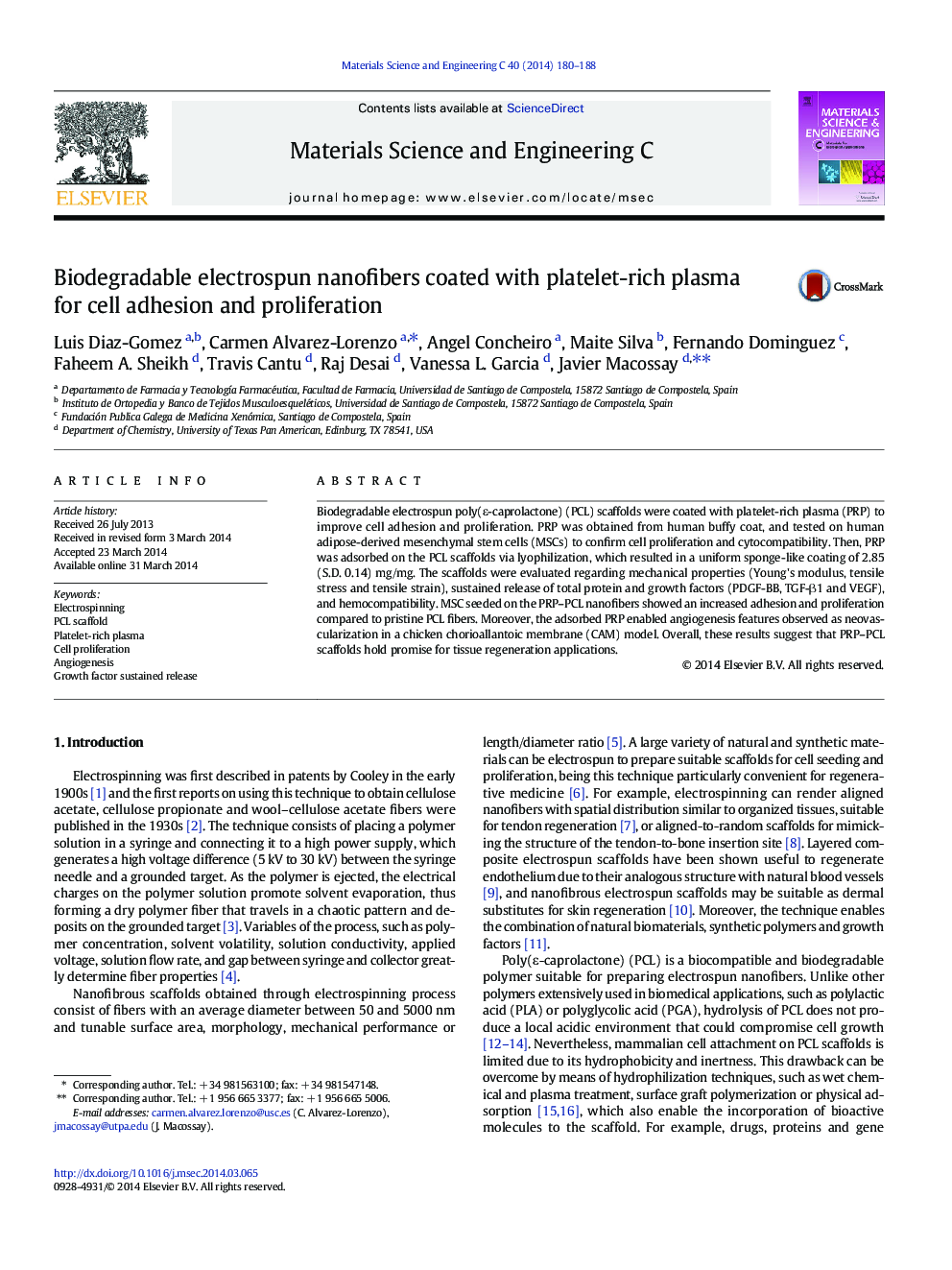| Article ID | Journal | Published Year | Pages | File Type |
|---|---|---|---|---|
| 1428330 | Materials Science and Engineering: C | 2014 | 9 Pages |
•Platelet-rich plasma (PRP) can be adsorbed on electrospun fibers via lyophilization.•PRP coating enhanced mesenchymal stem cell adhesion and proliferation on scaffolds.•PRP-coated scaffolds showed sustained release of growth factors.•Adsorbed PRP provided angiogenic features.•PRP-poly(ε-caprolactone) scaffolds hold promise for tissue regeneration applications.
Biodegradable electrospun poly(ε-caprolactone) (PCL) scaffolds were coated with platelet-rich plasma (PRP) to improve cell adhesion and proliferation. PRP was obtained from human buffy coat, and tested on human adipose-derived mesenchymal stem cells (MSCs) to confirm cell proliferation and cytocompatibility. Then, PRP was adsorbed on the PCL scaffolds via lyophilization, which resulted in a uniform sponge-like coating of 2.85 (S.D. 0.14) mg/mg. The scaffolds were evaluated regarding mechanical properties (Young's modulus, tensile stress and tensile strain), sustained release of total protein and growth factors (PDGF-BB, TGF-β1 and VEGF), and hemocompatibility. MSC seeded on the PRP–PCL nanofibers showed an increased adhesion and proliferation compared to pristine PCL fibers. Moreover, the adsorbed PRP enabled angiogenesis features observed as neovascularization in a chicken chorioallantoic membrane (CAM) model. Overall, these results suggest that PRP–PCL scaffolds hold promise for tissue regeneration applications.
Graphical abstractFigure optionsDownload full-size imageDownload as PowerPoint slide
